Ultralätta skidor förändrar vintersporterna och erbjuder portabilitet och enkelhet som större, klumpigare skidor inte kan matcha. Men de passar inte alla. Oavsett om du är nybörjare eller erfaren skidåkare, här är vad du behöver veta:
- Portabilitet: Dessa skidor är pyttesmå jämfört med traditionella. Vissa modeller, som Snowfeet Mini Ski Skates, är bara 15 tum långa och får plats i en ryggsäck. Inga fler takräcken eller tunga utrustningsväskor.
- Lättanvända: De flesta modeller fungerar med vanliga vinterpjäxor, utan behov av dyr, specialiserad utrustning. Dessutom är de snabba att lära sig – perfekta för nybörjare.
- Terrängbegränsningar: De är bäst för preparerade backar, lätt puder och måttliga hastigheter. Förvänta dig inte att de klarar djup snö eller högfarts carving som traditionella skidor.
- Prestandaavvägningar: Även om de är smidiga och roliga saknar de stabiliteten och kontrollen hos längre skidor, särskilt i brant eller ojämn terräng.
Är det värt det? Om du värdesätter kompakt utrustning och avslappnad skoj framför topprestationer kan ultralätta skidor som Snowfeet bli din nya favorit. Men om du jagar hastighet, djup puder eller avancerade åk leder traditionella skidor fortfarande ligan.
Snabb översikt över Snowfeet-modeller:
- Mini Ski Skates (38 cm): 150 USD, superportabla, perfekta för nybörjare.
- PRO (50 cm): 199 USD, mer stabilitet, fortfarande kompakt.
- Skiskates (44 cm): 390 USD, hållbara, designade för tricks och snabba svängar.
- Skiblades (65–120 cm): 450–690 USD, en mellanväg mellan short skis och traditionella skidor.
Snowfeet erbjuder ett lättanvänt och lättviktigt alternativ för casual skidåkare eller stadsbor med ont om förvaringsutrymme. Men om du är en adrenalinjunkie eller pudersökare kommer du troligen att hålla dig till dina långa skidor.
1. Snowfeet* Mini Ski Skiskates (38 cm)
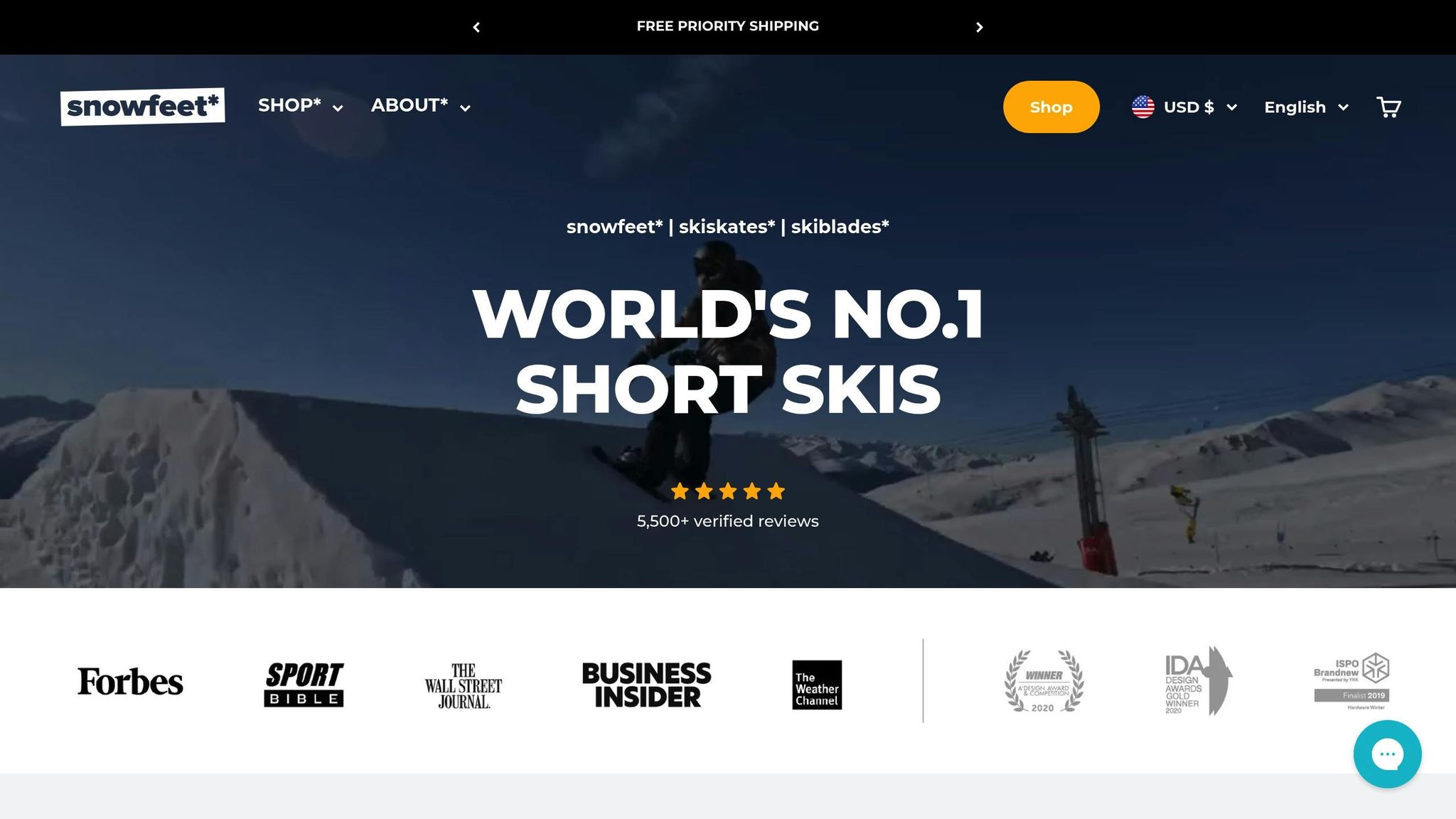
Med bara 15 tum längd ger Snowfeet* Mini Ski Skates en fräsch twist till vintersportutrustningen. Börjar på $150, dessa mini ski skates är det mest kompakta alternativet i kategorin ultralätta skidor.
Prestanda
De 38 cm Mini Ski Skates erbjuder en skridskoliknande upplevelse som skiljer dem från traditionella skidor som de från Rossignol eller K2. Istället för långa, skurna svängar tillåter dessa Skiskates snabba, skarpa rörelser, vilket ger dig oöverträffad smidighet i backen. De är perfekta för måttliga hastigheter, men erbjuder inte samma stabilitet eller högpresterande fart som du kan förvänta dig av längre skidor designade för alpin skidåkning.
Bärbarhet
Bärbarhet är där Mini Ski Skates verkligen glänser. Glöm besväret med att släpa runt på tunga skidpjäxor och överdimensionerade väskor. Dessa Skiskates är så lätta och kompakta att du kan slänga dem i ryggsäcken tillsammans med dina vardagliga nödvändigheter.
"Lätta och små nog att få plats i din ryggsäck, låter Snowfeet dig slippa besväret med tunga skidpjäxor och dyr utrustning. Du kan ta dem med dig överallt för dina vinteräventyr."
Denna bekvämlighet är en game-changer jämfört med traditionell utrustning från märken som Burton eller Salomon, som ofta kräver klumpiga väskor eller takräcken för transport. Som Ally från Indy påpekar:
"De är så lätta att resa med och att komma på och av liften."
Mångsidighet
En annan utmärkande egenskap är deras kompatibilitet med vanliga vinterkängor – inga specialiserade skidpjäxor behövs här. Detta öppnar möjligheter att utforska områden som traditionella skidor inte lätt når, som smala stigar, trädgårdar eller små backar.
"Lätta att slänga i ryggsäcken för att snabbt ta sig runt i skidorten", säger Anthony Castaldo.
Deras kompakta design gör dem perfekta för snabba äventyr eller att ta sig fram i trånga utrymmen där fullstora skidor skulle vara otympliga.
Begränsningar
Självklart har Mini Ski Skates sina nackdelar. Vid 38 cm saknar de stabiliteten och kantkontrollen som krävs för högfarts alpin skidåkning. De presterar heller inte lika bra i djup pudersnö, där traditionella skidor ger bättre flyt och kontroll.
Erfarna skidåkare kan behöva lite tid för att vänja sig vid den kortare längden och skate-rörelsen, men nybörjare tycker ofta att dessa är lättare att lära sig. De passar bäst för packad snö och måttlig terräng, snarare än den allvädersanpassade mångsidigheten hos traditionella skidor.
Nästa går vi igenom andra modeller i Snowfeet*-serien och ser hur de passar olika skidstilar och preferenser.
2. Snowfeet* PRO (50 cm / ~20 tum)
Snowfeet* PRO balanserar kompakt portabilitet med bättre prestanda. Vid $199, dessa ski skates ligger bekvämt mellan de minsta modellerna och traditionell alpinutrustning.
Prestanda
PRO-modellen höjer nivån med förbättrad stabilitet och kontroll jämfört med kortare versioner. Dess extra längd ger dig bättre kantgrepp och smidigare hantering på preparerade backar. Designen gör tekniken lättare att lära sig samtidigt som den erbjuder den intuitiva skate-rörelsen och mjuk hastighetskontroll.
Vid 50 cm (ungefär 20 tum) ger PRO en stabil åktur och enkel kontroll, perfekt för avslappnad skoj på berget. De specialanpassade bindningarna eliminerar behovet av förhöjningar, vilket håller profilen låg. Detta förbättrar inte bara den naturliga skatekänslan utan säkerställer också att dina pjäxor sitter säkert på plats. Och glöm inte – den är designad för att vara resevänlig utan att kompromissa med prestandan.
Bärbarhet
Med en längd på cirka 20 tum är PRO-modellen imponerande portabel. Dess nedskalade bindningar gör det enkelt att slänga ner den i en väska eller ta med på spontana vinterutflykter. Till skillnad från traditionella skidor som kräver klumpiga väskor eller takräcken, handlar dessa Skiskates helt om bekvämlighet.
Mångsidighet
PRO glänser på nypreparerade gröna backar, där dess smidighet låter dig göra snabba svängar och njuta av lekfull skidåkning. Den är perfekt för fritidsskidåkare som värdesätter roligt framför hastighet. Dessutom kan du använda den med dina vanliga vinterkängor – inget behov av dyra, klumpiga pjäxor. Detta gör den perfekt för avslappnade äventyr i bergen eller snabba åk när du har ont om tid. Det sagt, denna mångsidighet kommer med några kompromisser.
Begränsningar
Medan PRO erbjuder mer stabilitet än kortare modeller, kan den inte mäta sig med högfartsprestanda eller puderhantering hos fullängdsskidor. Den presterar bäst på packad snö och måttlig terräng. För mer avancerade skidåkare eller de som jagar aggressiva, högfartsåk, levererar traditionella skidor från märken som Head eller Dynastar bättre flyt och carving. Avvägningen är tydlig: med PRO får du oöverträffad portabilitet och användarvänlighet men förlorar en del av den hastighet och stabilitet som längre skidor ger.
3. Snowfeet* Skiskates (44 cm / ~17 tum)
Snowfeet* fortsätter att tänja på gränserna för vintersportutrustning med sina Skiskates. Kompakta, mångsidiga och byggda för prestanda, dessa Skiskates kostar 390 dollar och har en hållbar konstruktion med träkärna. Designade för snöentusiaster som längtar efter smidighet och portabilitet, ger de en fräsch twist på traditionell skidåkning.
Prestanda
Med en längd på bara 44 cm (~17 tum) erbjuder dessa Skiskates en unik kombination av manövrerbarhet och stabilitet. Konstruktionen med träkärna förbättrar kantgreppet och responsen, vilket gör det lättare att göra precisa svängar på hårt packad snö. Deras kompakta design hjälper dig att navigera trånga utrymmen och utföra skarpa rörelser med lätthet – något du inte hittar hos traditionella alpinskidor. Dessutom håller den låga profildesignen ditt tyngdpunkt närmare snön, vilket ger bättre kontroll och minskar trötthet under längre pass. Denna genomtänkta design säkerställer en jämn, kontrollerad åktur samtidigt som det är roligt och dynamiskt.
Bärbarhet
En av de mest framträdande egenskaperna hos dessa Skiskates är hur lätta de är att bära med sig. De är tillräckligt små för att få plats i en vanlig ryggsäck eller sportväska, vilket gör dem till ett utmärkt alternativ för spontana resor till bergen eller snabb förvaring hemma. Även i backarna är de enkla att ta på och av liften, vilket ökar den totala bekvämligheten.
Mångsidighet
Skiskates är designade för att vara kompatibla med olika typer av skor, inklusive vanliga vinterkängor, snowboardkängor och skidpjäxor. De presterar bra på en rad olika terränger, från preparerade backar till terrängparker och till och med lätt offpist. Tack vare konstruktionen med träkärna behåller de konsekvent prestanda i olika snöförhållanden. Oavsett om du cruisar nerför skidbackar eller provar freestyletrick erbjuder dessa skiskates en rolig och engagerande upplevelse. De är perfekta för skidåkare som prioriterar teknik och nöje framför topphastighet, vilket gör dem till ett mångsidigt val för alla typer av vinteräventyr.
Begränsningar
Det sagt, Skiskates har sina kompromisser. Deras kompakta storlek och fokus på smidighet innebär att de inte är idealiska för hög hastighetsstabilitet eller djup pudersnö. Om du planerar att ge dig på djup snö kan traditionella skidor från märken som Atomic eller K2 vara ett bättre val för deras överlägsna flytförmåga och spårning. Dessutom speglar priset på 390 $ den högkvalitativa konstruktionen och prestandafunktionerna men kan kännas högt jämfört med andra Snowfeet*-modeller. Dessa skiskates passar bäst för dem som värdesätter mångsidighet och en unik skidupplevelse framför traditionell skidprestanda.
4. Snowfeet* Skiblades (65 cm, 99 cm, 120 cm)
Snowfeet* Skiblades ger en fräsch twist på korta skidor och finns i tre storlekar: 65 cm (450 $), 99 cm (490 $) och 120 cm (690 $). Tänk på dem som den perfekta blandningen av Skiskates portabilitet och fördelarna med traditionella skidor. Låt oss bryta ner hur dessa skiblades tillför variation och spänning till Snowfeet*-sortimentet.
Prestanda
- 65 cm (~26 inches): Dessa handlar helt om smidighet. Perfekta för snabba svängar och att navigera i trång terräng, de glänser där klumpigare skidor kan kännas otympliga. Om du vill ha fart och precision i begränsade utrymmen är denna storlek ditt förstahandsval.
- 99 cm (~39 inches): En perfekt balans för åkare som vill ha en mix av stabilitet och lekfullhet. De är utmärkta för medelgoda till avancerade skidåkare som söker kontroll i högre hastigheter samtidigt som de njuter av den smidiga, fria känslan.
- 120 cm (~47 inches): Dessa erbjuder mer stabilitet utan att förlora den kompakta fördelen. De hanterar hastighet väl och levererar mjuka, responsiva svängar, vilket gör dem till ett roligt alternativ till traditionella långa skidor.
Bärbarhet
En av de mest framträdande egenskaperna hos Snowfeet* Skiblades är hur lätta de är att transportera. Storleken 65 cm passar enkelt i vanliga skidväskor, medan modellerna på 99 cm och 120 cm fortfarande är mycket mer hanterbara än traditionella skidor på 150–190 cm. Oavsett om du packar dem i bilen eller bär dem till backen är de designade för att hålla det enkelt utan att kompromissa med prestandan.
Mångsidighet
- 65 cm: Idealisk för terrängparker och trånga, slingrande åk.
- 99 cm: Hanterar preparerade spår och off-pist äventyr med lätthet.
- 120 cm: En utmärkt allroundare för all-mountain skidåkning.
En annan stor fördel? De är kompatibla med vanliga vinterskor, snowboardpjäxor och alpina pjäxor. Den typen av flexibilitet är svår att hitta med traditionell skidutrustning.
Begränsningar
Varje storlek har sina kompromisser. 65 cm skiblades kan kännas mindre stabila i höga hastigheter eller i djup pudersnö. 99 cm-modellen, som är mångsidig, kan ha svårt i särskilt tuffa snöförhållanden. Och 120 cm-alternativet, även om det är stabilt, når inte riktigt upp till prestandan hos fullängdsskidor i extrema situationer. Dessa kompromisser är avsiktliga och prioriterar smidighet och bärbarhet framför traditionella skidfunktioner.
Snowfeet* Skiblades erbjuder ett roligt, kompakt alternativ till konventionella skidor. De utmanar idén att längre alltid är bättre och bevisar att skidåkning kan vara lika spännande med en kortare, mer bärbar setup.
5. Traditionella skidor och snowboardar
När det gäller traditionella skidor och snowboardar handlar det om utrustning som är större, tyngre och, låt oss vara ärliga, lite mer krävande. Även om de erbjuder seriösa prestandafördelar, kommer de också med utmaningar som Snowfeets ultralätta design syftar till att förenkla.
Prestanda
Traditionella skidor glänser i djup pudersnö och vid högfarts carving. Deras längre kanter greppar snön bättre, vilket ger dig mer stabilitet i branta backar eller när du ger dig ut off-pist. Det är som att ha en stabil, pålitlig partner när du tar dig an utmanande terräng.
Snowboardar å andra sidan levererar på freestyle och varierad terräng. Den bredare ytan fördelar din vikt, vilket gör puderdagar till en dröm. Men samma bredd kan kännas klumpig i trånga utrymmen där snabba, skarpa svängar behövs.
Fångsten? Både skidor och snowboard kräver styrka och skicklighet. Längre skidor betyder mer utrustning att kontrollera, vilket kräver starka ben och precis teknik. Snowfeet tar däremot en annan väg, med fokus på bärbarhet och enkel användning, så att du kan slippa det tunga lyftet – bokstavligen.
Bärbarhet
En av de största huvudvärkarna med traditionell utrustning är att släpa runt på den. En typisk skidutrustning kan väga 8 till 12 pund per skida (exklusive pjäxor och bindningar), medan snowboardar väger mellan 6 och 10 pund. Sedan finns storleken – skidväskor är ofta över 6 fot långa, och de styva alpina pjäxorna? De är inte direkt lätta att packa. Lägg till takräcken eller flygbolagsavgifter, och att resa med traditionell utrustning blir ett logistiskt pussel.
Snowfeet undviker helt dessa problem. Kompakta och lätta, de är designade med bärbarhet i åtanke, vilket sparar dig från besväret med överdimensionerade väskor och extra avgifter.
Mångsidighet
Traditionella pjäxor är en en-tricks-ponny. Alpina skidpjäxor, som kan kosta mellan 200 och 800 dollar, är strikt för skidåkning. Snowboardpjäxor? Samma sak – specialiserade och inte billiga. Dessutom kan inlärningskurvan för traditionell utrustning vara brant. Skidskolor rekommenderar ofta 3 till 5 dagars lektioner bara för att lära sig grunderna, medan snowboardåkare kan behöva 2 till 3 dagar för att säkert koppla ihop svängar. Det är mycket tid – och pengar – som spenderas på lektioner och liftkort under inlärningsfasen.
Snowfeet tar en annan väg och erbjuder en mer tillgänglig och mångsidig upplevelse, utan behov av dedikerade pjäxor eller en brant inlärningskurva.
Begränsningar
Låt oss prata förvaring. Traditionella skidor behöver över 6 fot utrymme, och snowboards är inte mycket bättre, de kräver inte bara längd utan också extra bredd. Sedan finns underhållet – årliga justeringar, vaxning och tillfälliga reparationer som alla adderar upp.
Kostnad är en annan stor faktor. En komplett skiduppsättning (skidor, bindningar, pjäxor och stavar) kan kosta allt från 600 till 2 000 dollar. Snowboardpaket är något billigare men fortfarande dyra, från 400 till 1 500 dollar. När du väl har valt din utrustning är du i princip låst till den aktiviteten för dagen, med liten flexibilitet eller möjlighet att prova något nytt.
Det är där Snowfeet kommer in. Deras kompakta, effektiva design erbjuder ett uppfriskande alternativ som låter dig njuta av backarna utan bulk, kostnad eller engagemang som traditionella uppsättningar kräver.
sbb-itb-17ade95
Portabilitet och Transport
Snowfeet handlar inte bara om prestanda i backen; det är också en revolution när det gäller portabilitet. Låt oss vara ärliga, att resa med traditionella skidor eller snowboards kan kännas som en logistisk mardröm. Med deras storlek och vikt är de inte direkt resevänliga. Snowfeet, å andra sidan, vänder på steken med sin ultralätta, kompakta design.
För att sätta saker i perspektiv är traditionella alpinskidor vanligtvis 5 till 6 fot långa och väger 8–12 pund per skida. Snowboards är inte mycket bättre, de varierar från 4,5 till 5,5 fot och väger 6–10 pund. Jämför det nu med Snowfeet: Mini Ski Skates är bara 15 tum långa (38 cm), och Skiskates mäter 17,3 tum (44 cm). Dessa är små i jämförelse, vilket gör dem mycket lättare att bära, förvara och transportera.
"Lätta, kompakta och redo att gå. Snowfeet passar din utrustning, din bil och din livsstil." (Snowfeet* Webbplats)
Denna kompakta storlek betyder att du kan slänga Snowfeet i en vanlig ryggsäck eller bilens bagageutrymme, med gott om plats för andra nödvändigheter. Ingen anledning till klumpiga skidväskor eller takräcken. Traditionella skiduppsättningar kräver ofta dedikerad förvaring – som ett garage, källare eller till och med skidortsskåp. Snowfeet? De glider snyggt in i en garderob, under en säng eller till och med i ett kontorsskåp. Det är bekvämlighet när den är som bäst.
Här är en snabb jämförelse som visar hur mycket enklare Snowfeet gör saker:
| Utrustningstyp | Längd | "Vikt" | "Förvaring" | "Transportmetod" |
|---|---|---|---|---|
| "Snowfeet Mini Ski Skates" | "15 in (38 cm)" | "Ultralätt" | "Ryggsäck / Garderob" | "Handbagage" |
| "Snowfeet Skiskates" | "17.3 in (44 cm)" | "Ultralätt" | "Ryggsäck / Garderob" | "Handbagage" |
| "Snowfeet PRO" | "19.7 in (50 cm)" | "Ultralätt" | "Ryggsäck / Garderob" | "Handbagage" |
| Traditionella alpinskidor | "60–72 in (152–183 cm)" | "8–12 lbs per skida" | "Avsatt plats (garage, skidortsskåp)" | "Skidväska / Takräcke" |
| Snowboards | "54–66 in (137–168 cm)" | "6–10 lbs" | "Avsatt plats (garage, skidortsskåp)" | "Brädväska / Takräcke" |
"Mycket mer portabelt – och prisvärt – än traditionella skidor eller snowboards." (Uncrate)
För stadsbor är denna portabilitet en riktig game-changer. Utrymme är ofta svårt att få tag på, och att förvara skrymmande utrustning är helt enkelt opraktiskt. Snowfeets kompakta design gör det enkelt att ha din vintersportutrustning nära till hands utan att offra värdefullt boendeutrymme.
Terränganvändning och inlärningskrav
Efter att ha lyft fram hur portabla och lätta att transportera Snowfeet är, låt oss dyka in i hur de presterar i olika terränger och vad som krävs för att bemästra dem. Snowfeet-produkter erbjuder ett fräscht alternativ till traditionell skidåkning och snowboarding, särskilt när det gäller inlärning. Tänk på det: att lära sig åka skidor eller snowboard tar ofta tid - nybörjare spenderar vanligtvis minst en vecka med lektioner bara för att känna sig bekväma på enklare blå backar. Att ta sig an tuffare utmaningar som pucklar, branta backar eller djup puder? Det kan ta ännu längre tid.
Snowfeet vänder på steken med en kortare inlärningskurva. Tack vare deras lätta och kompakta design kan de flesta lära sig grunderna på bara några åk. Balansen framåt-bakåt känns mer naturlig jämfört med den kantkontroll som krävs för traditionella skidor eller snowboards. Denna enkelhet gör att Snowfeet sticker ut samtidigt som de erbjuder olika prestandaalternativ beroende på modell.
Det sagt har Snowfeet sina begränsningar. De passar bäst för pistad snö och lätt puder - upp till cirka 10 cm. Medan de glänser i skidbackar, snowparker, pulkabackar och vandringsleder är de inte byggda för djup snö eller brant, ojämn terräng. Till exempel är Snowfeet Mini Ski Skates, PRO och Skiskates perfekta för pistade backar och lätt puder men saknar stabiliteten som krävs för tuffare förhållanden.
Å andra sidan erbjuder Snowfeet Skiblades, som finns i längderna 65 cm, 99 cm och 120 cm, en mellanväg mellan de ultrakorta Snowfeet-designen och traditionella skidor. De längre 99 cm och 120 cm Skiblades kan särskilt hantera djupare puder och ger bättre prestanda i snowparker, särskilt för carving eller landning av hopp.
Här är en snabb jämförelse för att göra det tydligare:
| Utrustningstyp | Bästa terräng | Puderkapacitet | Branta backar | Inlärningstid | Färdighetsnivå |
|---|---|---|---|---|---|
| Snowfeet Mini Ski Skates, PRO, Skiskates | Pistade backar, skidbackar, snowparker, pulkabackar, vandringsleder | Lätt puder (upp till cirka 10 cm) | Rekommenderas inte | Få backar | Nybörjarvänlig |
| Snowfeet Skiblades (65–120 cm) | Pistade backar, snowparker, lite puder | Bra (99–120 cm modeller) | Måttliga backar | 1–2 dagar | Från nybörjare till medel |
| Traditionella alpinskidor | All terräng, djup puder, pucklar | Utmärkt | Alla backar | 1+ veckor | Från nybörjare till expert |
| Snowboards | All terräng, puder, parker | Utmärkt | Alla backar | 1+ veckor | Från nybörjare till expert |
För dem som har haft svårt med teknikerna för traditionell skidåkning eller som har en bakgrund inom skridskoåkning, kan Snowfeet kännas som en revolution. Rörelsen efterliknar den naturliga känslan av skridskoåkning eller rollerblading, vilket gör det lättare för vissa att lära sig.
Snowfeet utmärker sig också i terrängparker och freestyleåkning. Dess kompakta storlek öppnar upp alla möjliga kreativa möjligheter för tricks, snurrar och hopp. Samtidigt ger de längre Skiblades den stabilitet som behövs för djärvare rörelser och landningar.
Medan traditionella skidor och snowboards dominerar i extrema och varierade förhållanden, fokuserar Snowfeet på att göra vintersporter tillgängliga och roliga. Genom att hålla inlärningskurvan kortare och vara bäst på preparerade backar, gör de glidning på snö till en upplevelse som alla kan njuta av.
För- och nackdelar
Här är en genomgång av fördelarna och nackdelarna för varje produkt. Denna jämförelse visar varför Snowfeet* tilltalar nybörjare och de som prioriterar portabilitet, trots vissa hastighetsrelaterade begränsningar.
| Produkttyp | Fördelar | Nackdelar |
|---|---|---|
| Snowfeet Mini Ski Skates (38 cm) | • Superportabel - passar lätt i en ryggsäck • Kompatibel med vanliga vinterskor • Utmärkt för trånga utrymmen med fantastisk manövrerbarhet • Lätt att lära sig, även för nybörjare • Rolig och avslappnad, perfekt för fritidsbruk • Budgetvänlig (från cirka $150) |
• Som IceCoastCoach påpekar kan den korta längden göra balansen knepig • Inte byggd för höga hastigheter • Bäst för preparerade backar eller lätt pudersnö • Mindre stabil jämfört med längre alternativ |
| Snowfeet PRO (50 cm) | • Bättre prestanda än Mini Ski Skates • Justerbara bindningar för en tajt passform • Fortfarande mycket portabel och lätt att använda • Rimligt prissatt runt $199 • Nybörjarvänlig med en förlåtande inlärningskurva • Finns i olika färgalternativ |
• Balansen blir svårare vid högre hastigheter • Begränsat till vissa terränger • Inte idealiskt för djup pudersnö • Kan kännas som en nyhet för erfarna skidåkare |
| Snowfeet Skiskates (44 cm) | • Tillverkade med en professionell träkärna för hållbarhet • Utmärkta för snabba, slalomliknande rörelser • Perfekta för terrängparker och tricks • Roliga på nypreparerade backar |
• IceCoastCoach varnar för att höga hastigheter kan vara riskfyllda • Skyddsutrustning rekommenderas för säkerhet • Högre prisnivå (från 390 dollar) |
| Snowfeet Skiblades (65–120 cm) | • Snäv 6-meters svängradie för skarp kontroll • Högkvalitativ grafitbas för styrka, hållbarhet och bättre glid • Stålkant ger starkt grepp • Stabil på måttlig puder • Mångsidiga för preparerade backar, pucklar och terrängparker • Responsiv träkärna för förbättrad prestanda |
• Mindre stabila än fullängdsskidor i höga hastigheter • Dyra, från 450 till 690 dollar • Inte lämpliga för rak, högfartsåkning |
| Traditionella alpinskidor | • Utmärkt stabilitet vid höga hastigheter • Topp-prestanda i djup puder • Längre svängradier (15–25 meter) för mjuka, stabila svängar • Väl etablerad teknik som många litar på • Hanterar en mängd olika fjällförhållanden |
• Brant inlärningskurva, ofta över en vecka för att bemästra • Otympliga och svåra att transportera • Mindre smidiga i trånga utrymmen • Skrämmande för nybörjare • Kräver specialiserade pjäxor och bindningar |
| Traditionella Snowboards | • Mångsidiga över många terränger • Perfekt för puder och parkåkning • Stabil vid höga hastigheter • Finns i design anpassade för olika stilar |
• Tar minst en vecka att lära sig för de flesta • Otympliga och besvärliga att bära • Kräver specifika pjäxor och bindningar • Kan kännas mindre naturligt för dem med en bakgrund inom skating |
Snowfeet* produkter utmärker sig i portabilitet och användarvänlighet, vilket gör dem till ett fantastiskt val för urbana äventyrare och casual skidåkare. De kortare modellerna, som Mini Ski Skates, är perfekta för nybörjare och erbjuder en snabb inlärningskurva och en lekfull upplevelse. Tänk dock på att ultra-korta längder kan kompromettera stabiliteten vid högre hastigheter, så det är klokt att vidta försiktighetsåtgärder.
För dem som söker en balans mellan prestanda och bekvämlighet utmärker sig Snowfeet* Skiblades. De kombinerar portabilitet med funktioner som en responsiv träkärna och stålkant, vilket gör dem till ett mångsidigt alternativ för olika terränger. Medan traditionella skidor och snowboards fortfarande dominerar i djup pudersnö och högfartssituationer, erbjuder Snowfeet* ett lätt, användarvänligt alternativ som är svårt att ignorera för dem som vill ha roligt utan besväret med klumpig utrustning.
Slutsats
Ultralätta skidor förändrar hur vi tänker på vintersporter, och Snowfeet* leder utvecklingen och bevisar att kortare skidor kan betyda mer skoj, enklare tillgång och större praktikalitet.
Visst, traditionella alpina skidor och snowboards har sin plats - de är fantastiska för att skära genom djup pudersnö eller nå höga hastigheter. Men de kommer också med branta inlärningskurvor och besväret att släpa runt på klumpig utrustning. Där kommer Snowfeet* in och erbjuder ett fräscht alternativ. Deras produkter är lätta att lära sig, ultraportabla och designade för att smidigt passa in i din livsstil.
Ta Mini Ski Skates till exempel. För bara 150 USD är de ett utmärkt val för urbana upptäckare eller casual skidåkare som söker något lätt och bekvämt. Dessutom kan nybörjare ge sig ut i backarna och börja ha kul på nolltid - ofta inom några timmar.
För dem som längtar efter lite mer prestanda levererar premium Snowfeet* Skiblades (450–690 USD) proffsnivåkontroll utan stressen från traditionella uppsättningar. Dessa är byggda med kvalitet i åtanke, erbjuder pålitlig hantering samtidigt som upplevelsen hålls lättsam och rolig - precis så skidåkning ska kännas.
Varje Snowfeet*-produkt är noggrant designad för att tillgodose specifika behov utan att offra nöjet. Även om dessa ultralätta skidor inte är byggda för högfartsracing, är de perfekta för preparerade spår och måttlig terräng - den typ av förhållanden där Snowfeet* verkligen glänser.
När du balanserar portabilitet med prestanda, tänker Snowfeet* inte bara om skidåkning - de omdefinierar den. För alla som är trötta på volymen och komplexiteten hos traditionell utrustning öppnar dessa lätta alternativ upp ett helt nytt sätt att njuta av vintern. Det är skidåkning gjort enkelt, roligt och tillgängligt - precis som det ska vara.
Vanliga frågor
Vilka är fördelarna med Snowfeet’s ultralätta skidor jämfört med traditionella skidor eller snowboards?
Snowfeet’s ultralätta skidor är som en frisk fläkt för alla som är trötta på att släpa runt på traditionell skid- eller snowboardutrustning. Dessa kompakta skidor handlar helt om portabilitet, enkel användning och mångsidighet. Deras lilla storlek gör att de är lätta att slänga i en väska, förvara hemma eller ta med på en sista-minuten-resa till backarna. Och här är det bästa: du kan använda dem med dina vanliga vinterkängor - inget behov av klumpiga, specialiserade skidpjäxor. Det betyder mindre vikt, mindre krångel och mer energi för det roliga.
Tack vare deras lätta design erbjuder Snowfeet exceptionell manövrerbarhet och kontroll, vilket gör dem till ett utmärkt val för nybörjare som testar på eller erfarna skidåkare som vill variera sig. Oavsett om du carving genom snötäckta stigar eller provar några trick i en urban miljö levererar dessa skidor en flexibel och rolig upplevelse. Snowfeet är inte bara en utrustning – de är ett helt nytt sätt att njuta av vintersport med mer frihet och mindre krångel.
Hur hanterar Snowfeet's ultralätta skidor olika terränger, och är de bra för alla snöförhållanden?
Snowfeet's ultralätta skidor är byggda för att hantera en rad terränger, från preparerade backar till lätt pudersnö och till och med ojämn snö. Tack vare deras kompakta storlek och smarta rocker-design är de superlätta att kontrollera och manövrera – även när förhållandena blir svåra. Oavsett om du ger dig ut för att utforska offpistspår eller navigerar i blandad snö gör deras lätta konstruktion dem enkla att bära utan att kompromissa med prestandan.
Till skillnad från traditionella skidor utmärker sig Snowfeet för sin mångsidighet och användarvänliga design. De erbjuder stabilitet och snabb respons, vilket gör dem till ett fantastiskt alternativ för alla som vill ha hög prestanda i en kompakt, enkel setup. Även om de kanske inte är förstahandsvalet för djup pudersnö eller mycket specialiserade åk, glänser de i de flesta vardagliga snöförhållanden och kombinerar bekvämlighet med imponerande funktionalitet.
Är Snowfeet's ultralätta skidor ett bra val för avancerade skidåkare som söker högpresterande fart och kapacitet i djup pudersnö?
Snowfeet's ultralätta skidor, som 99 cm Skiblades, handlar om portabilitet, mångsidighet och enkel hantering. Oavsett om du cruisar på lugna backar eller tar dig an mer teknisk terräng är dessa skidor designade för att hålla det roligt och hanterbart. De lutar dock starkt åt manövrerbarhet, vilket betyder att de inte är det bästa valet för hög hastighetsstabilitet eller att skära genom djup pudersnö – områden där traditionella, längre skidor med extra styvhet utmärker sig.
För avancerade skidåkare som jagar adrenalin i branta, snabba backar eller flyter lätt i djup pudersnö är traditionella skidor förmodligen det bästa valet. Men där Snowfeet-skidor verkligen glänser är i deras kompakta, lätta design och användarvänliga känsla. De är ett fantastiskt val för nybörjare, medelgoda skidåkare eller alla som vill variera sig med ett lekfullt, mångsidigt alternativ till traditionella skidor eller snowboards.

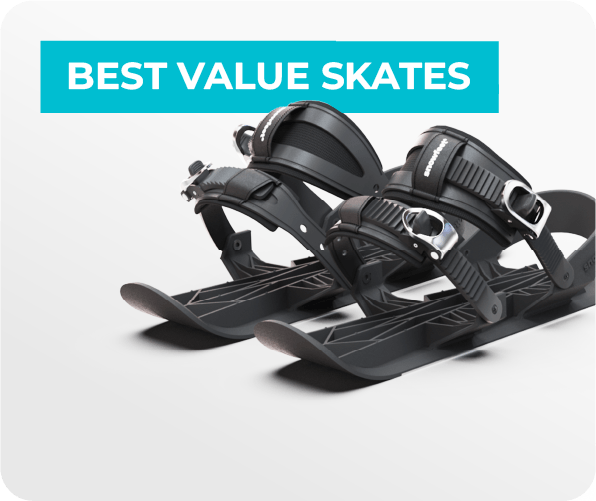



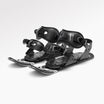
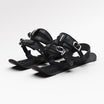
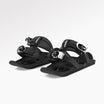
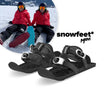
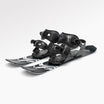
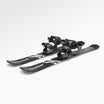

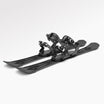
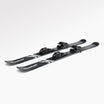
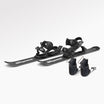





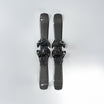
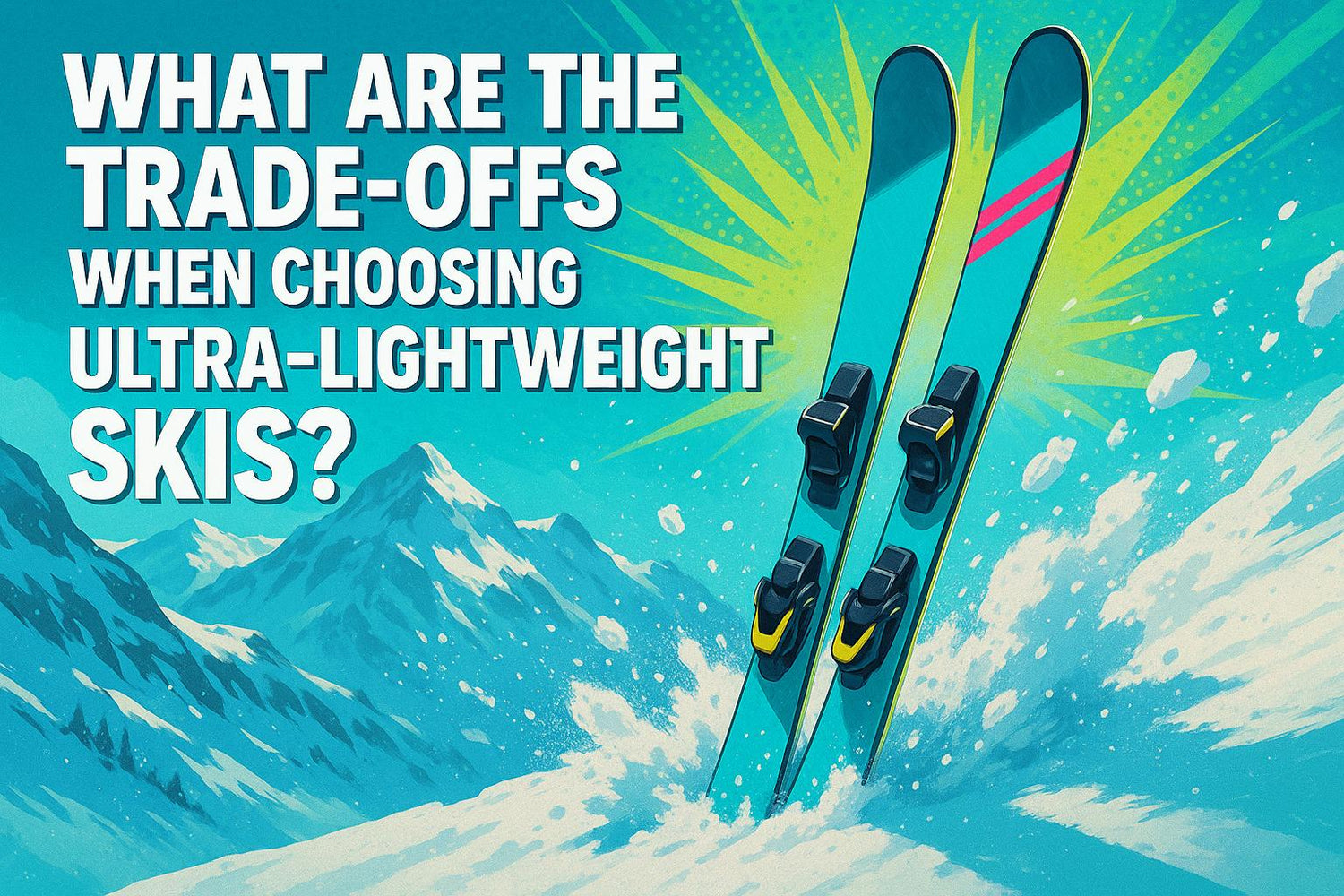
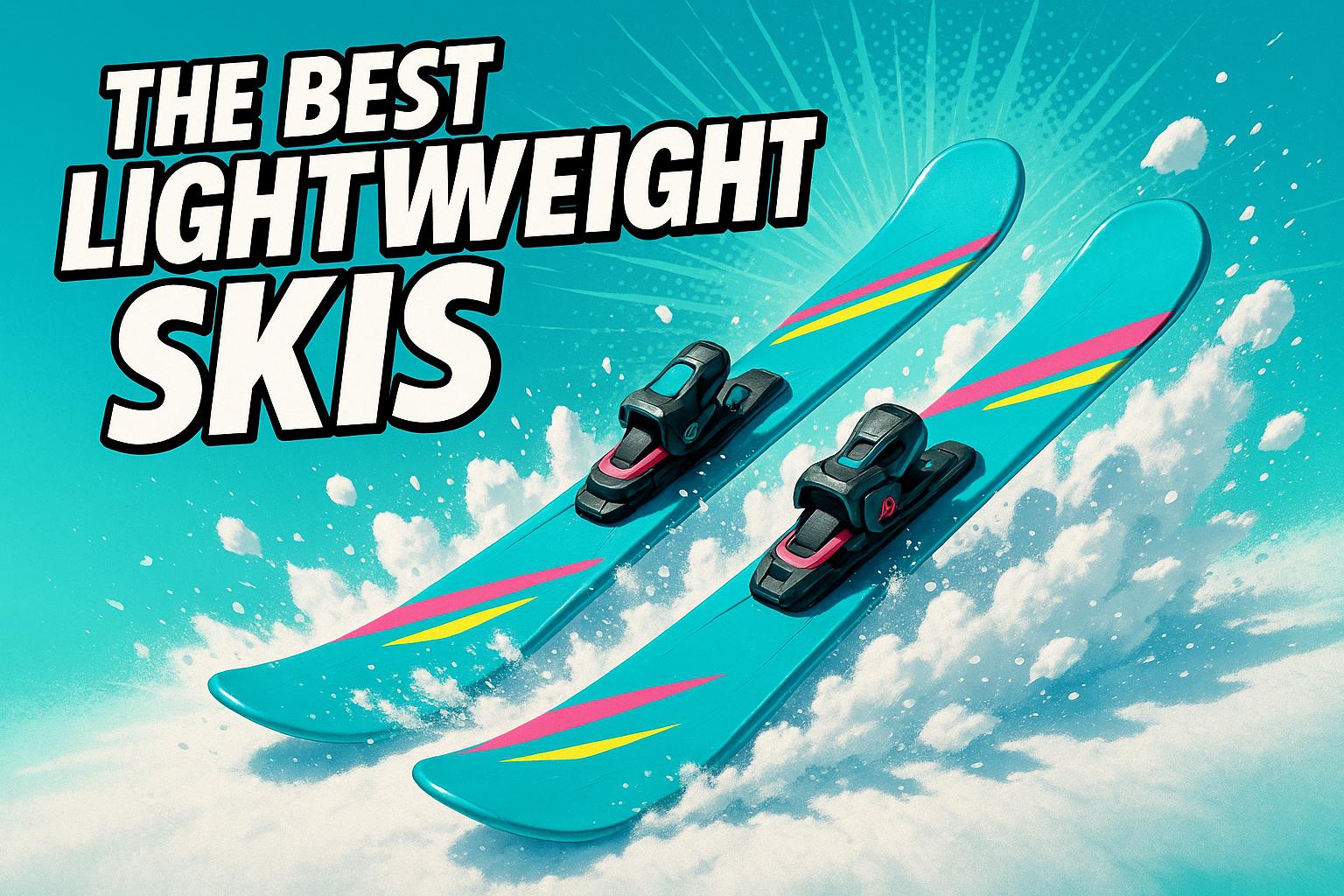
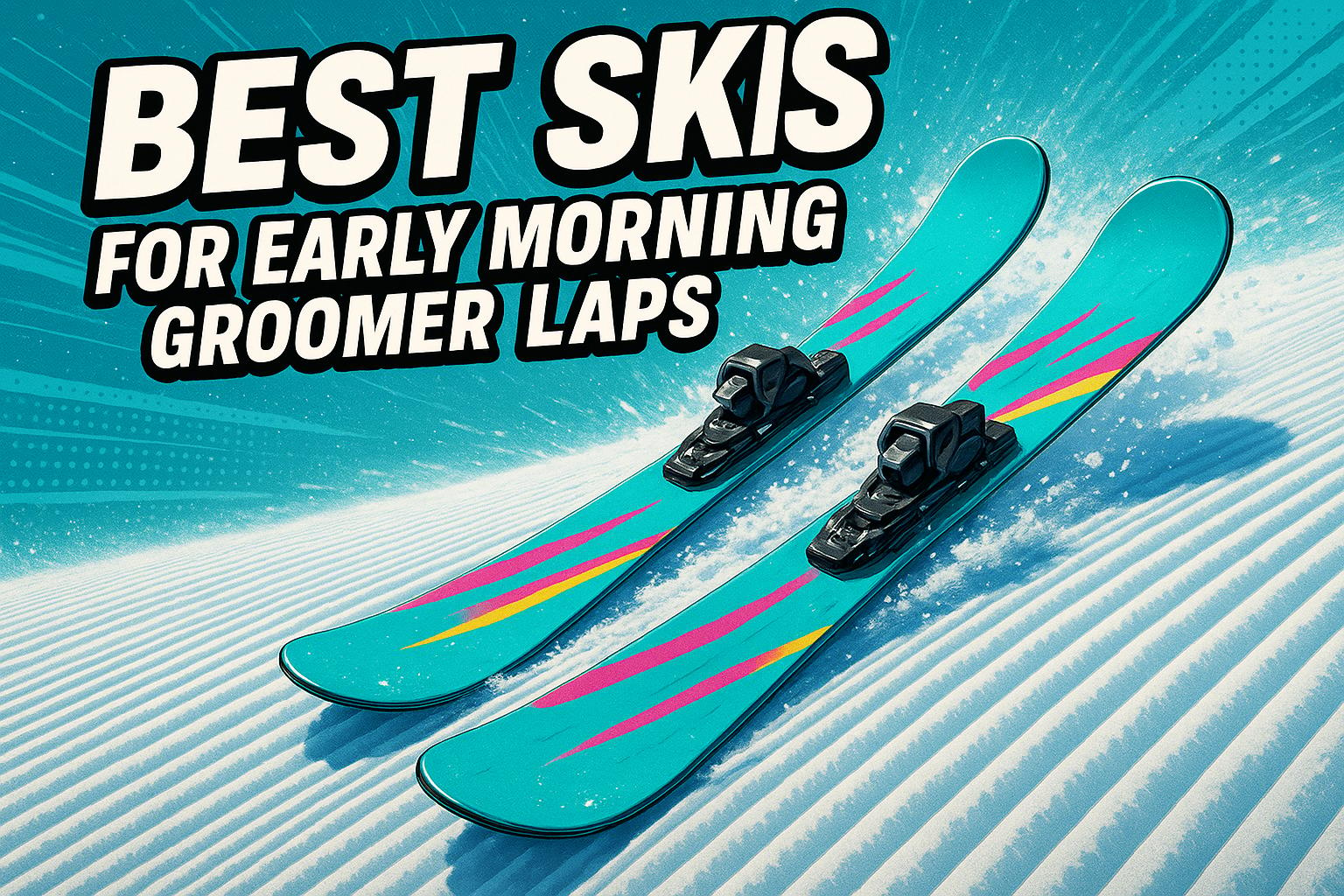
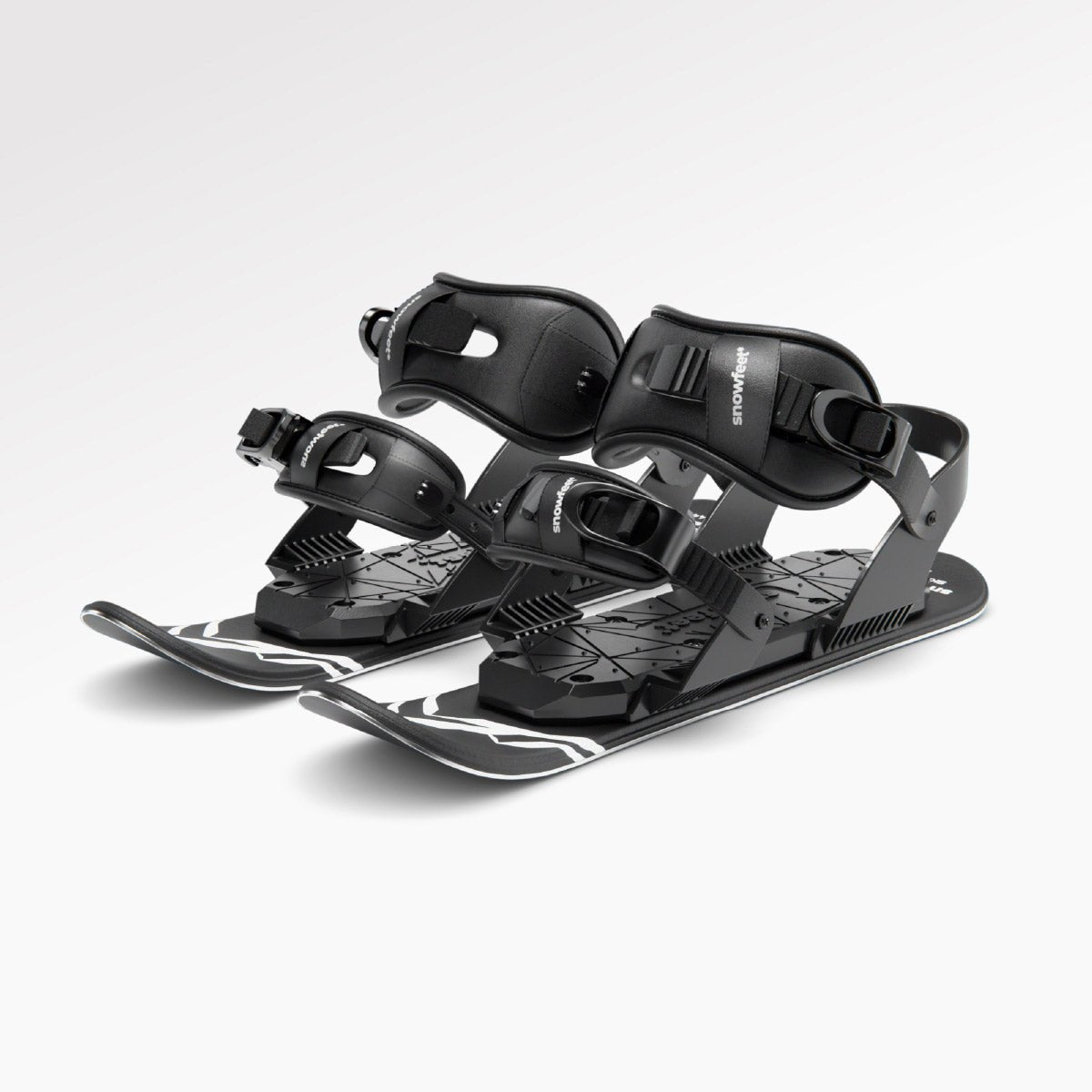

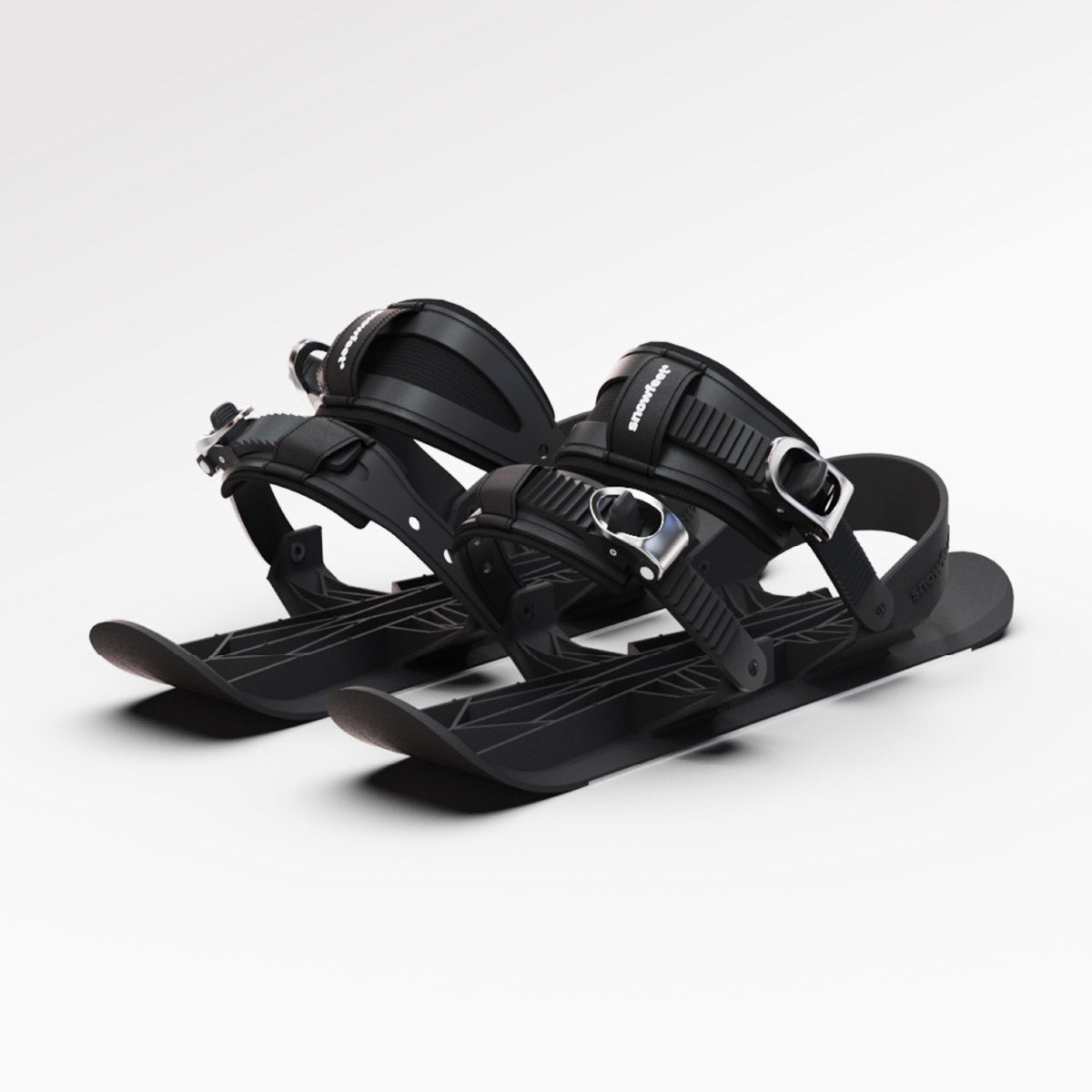
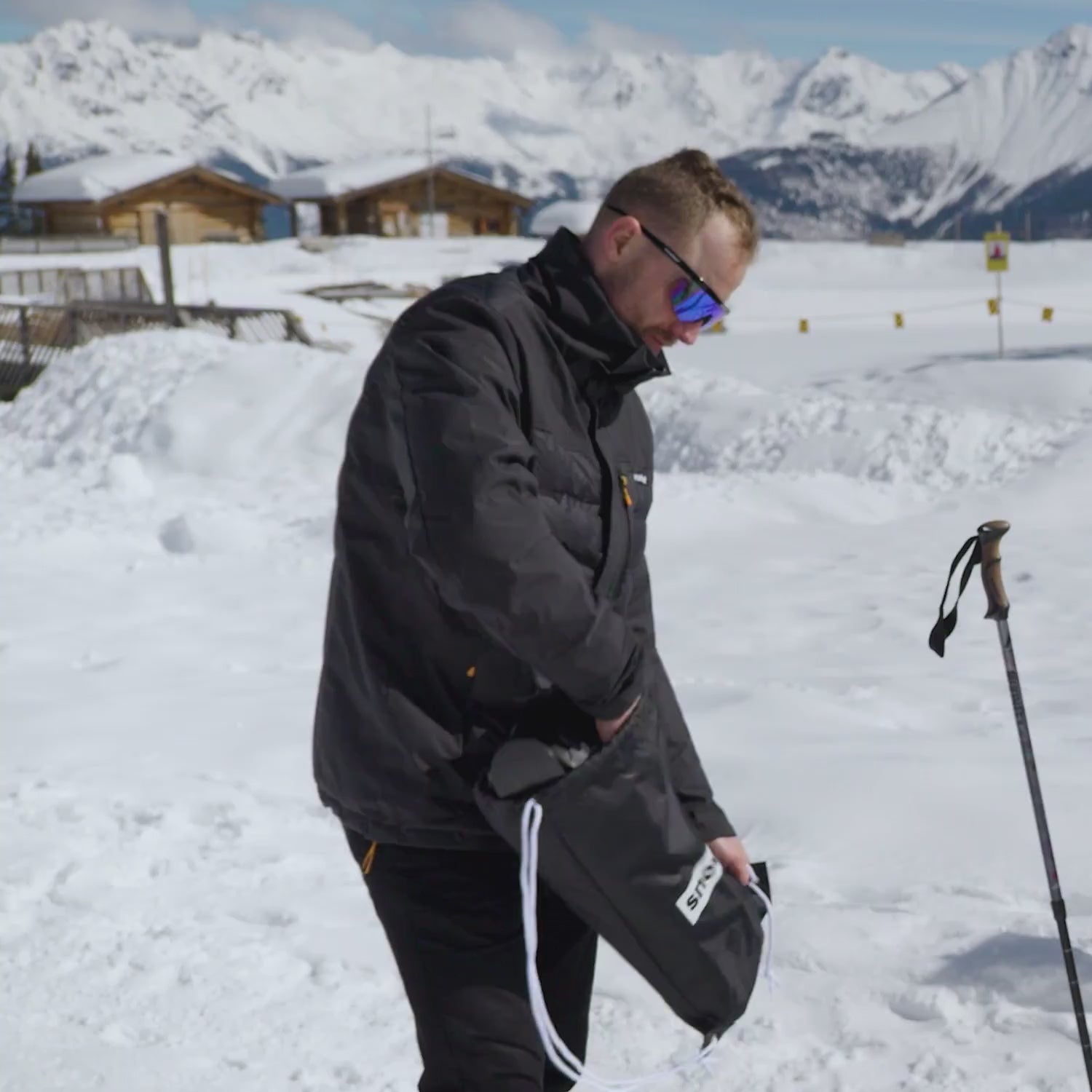
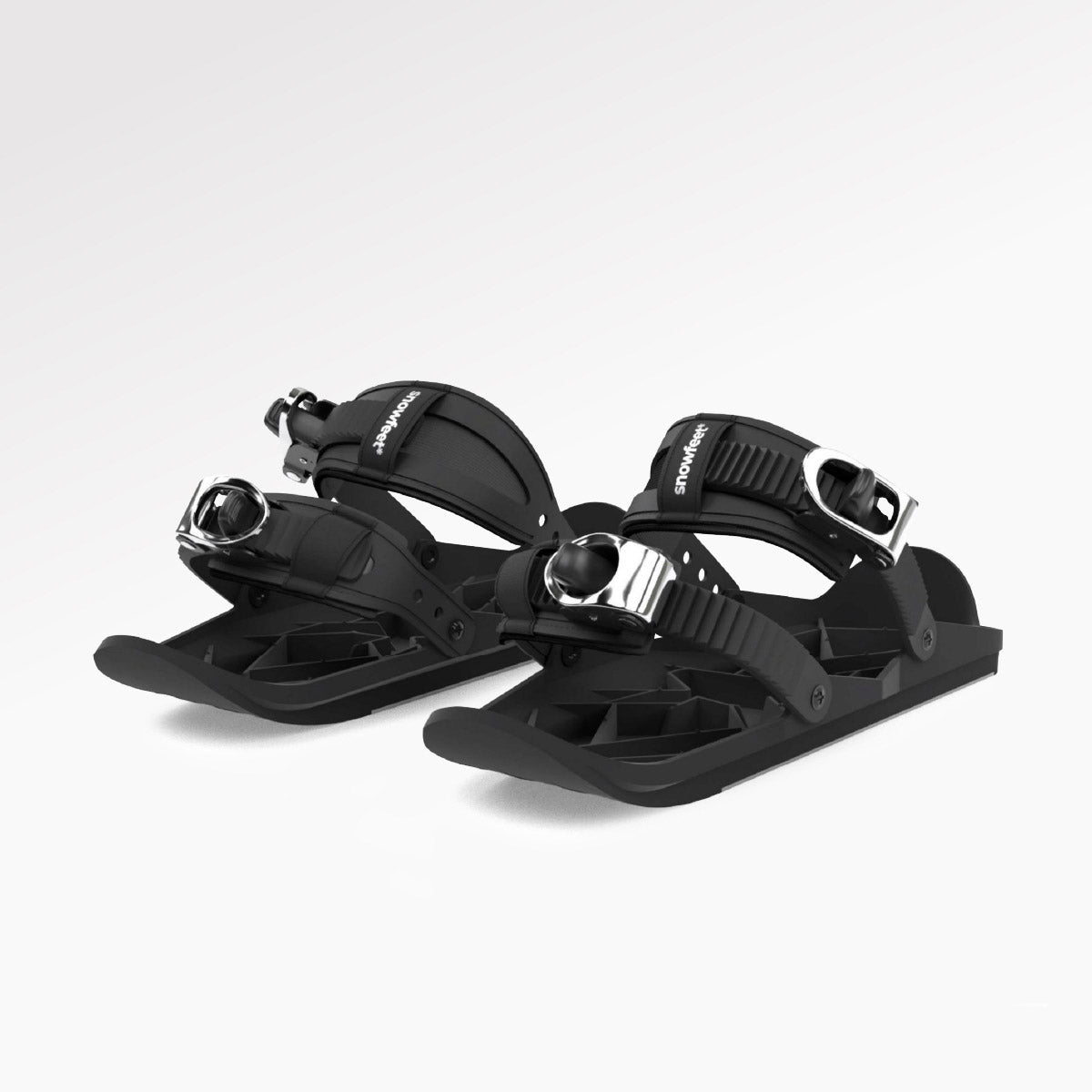
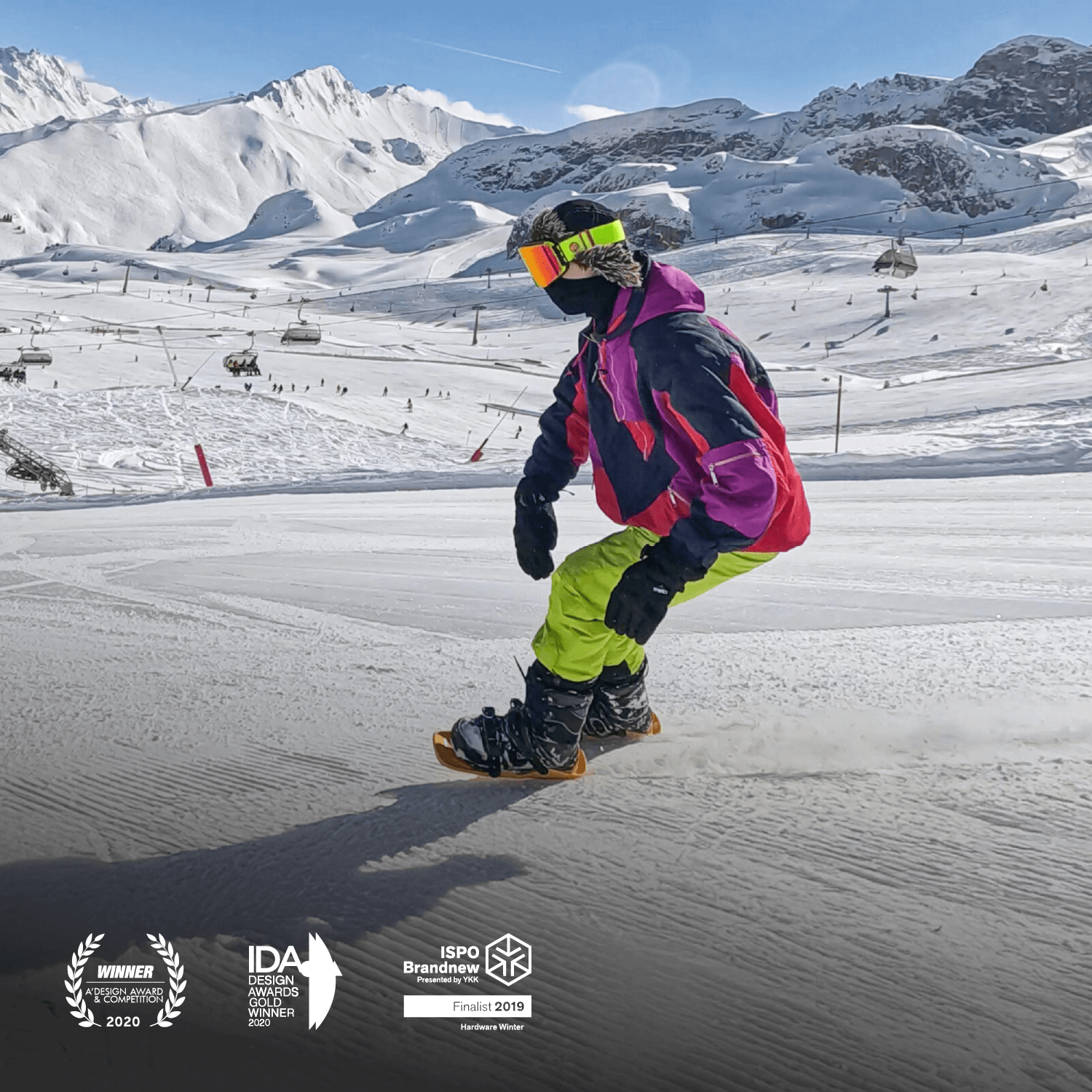

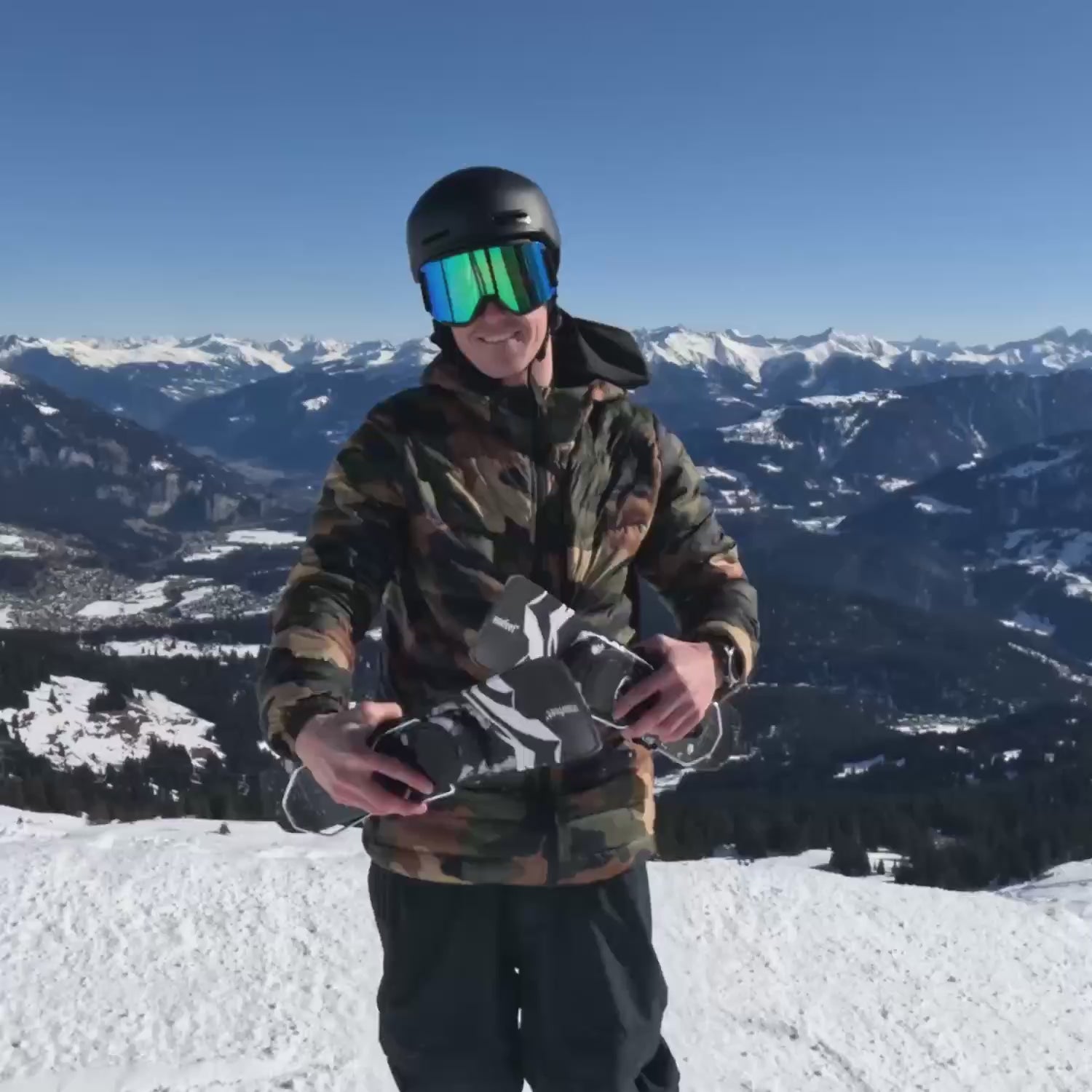
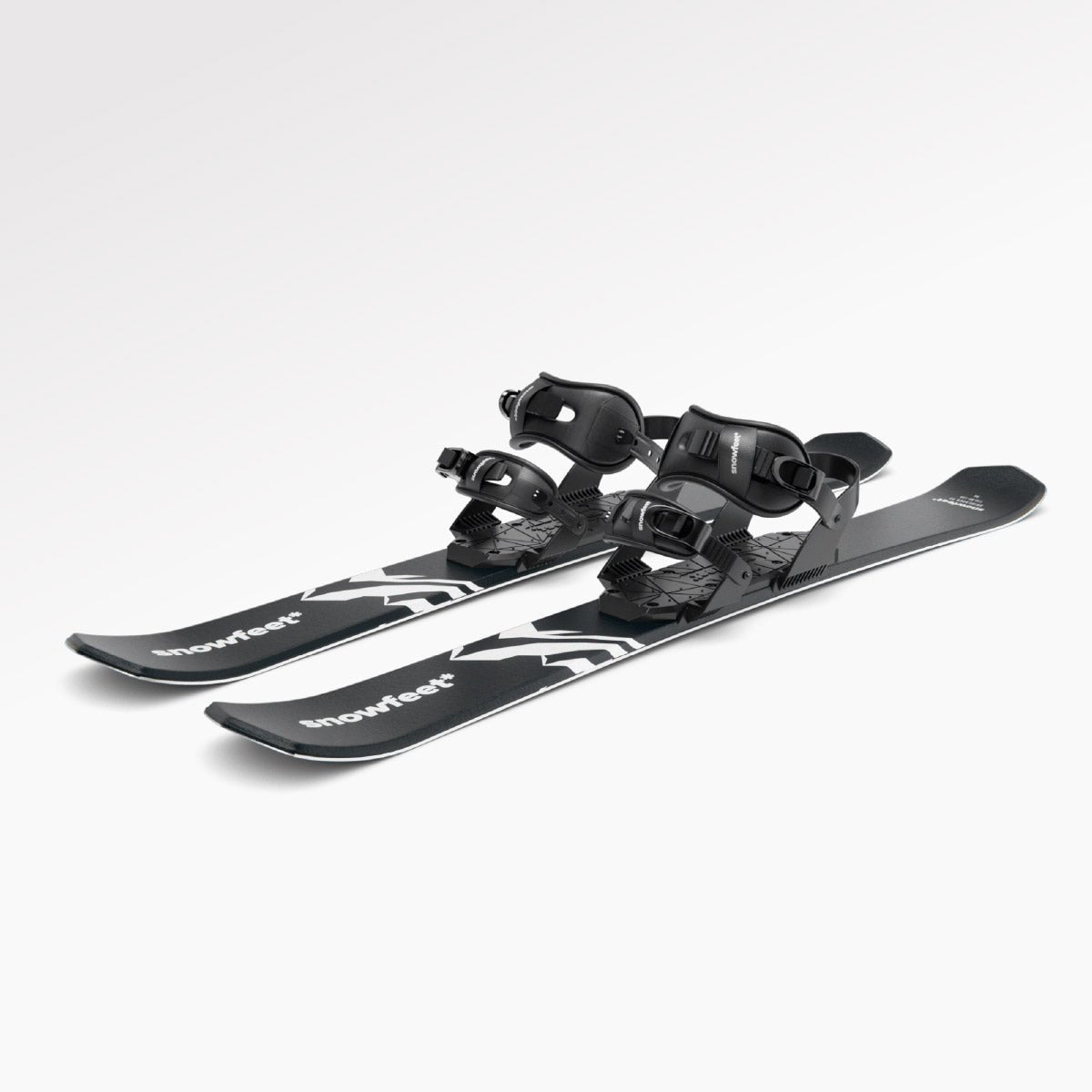
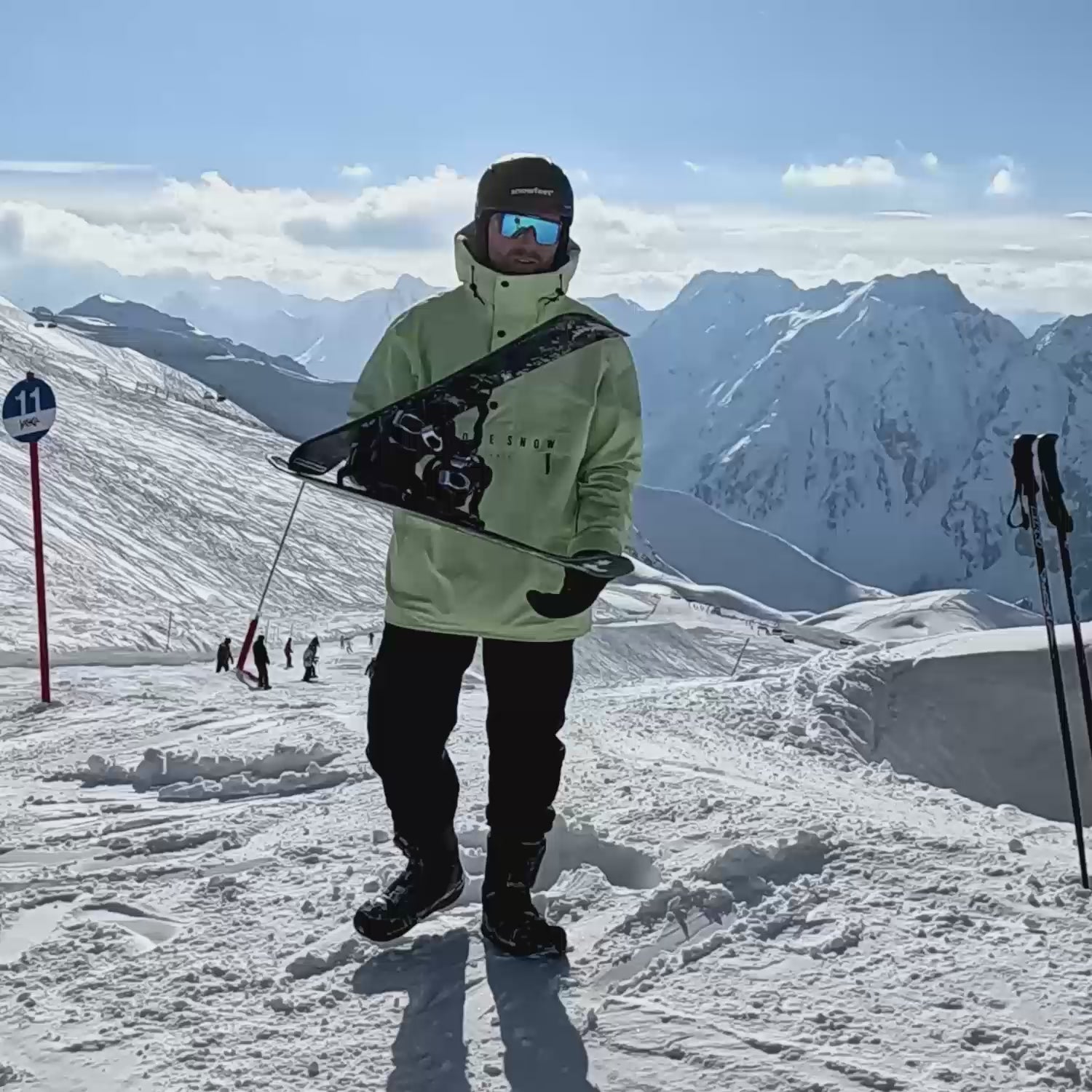
Lämna en kommentar
Denna webbplats är skyddad av hCaptcha och hCaptchas integritetspolicy . Användarvillkor gäller.